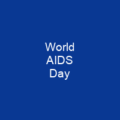HIV Prevention: A Comprehensive Guide
Imagine a world where the threat of HIV/AIDS is no longer a looming shadow over our lives. How can we make this vision a reality? The answer lies in understanding and implementing effective prevention strategies. From barrier methods to antiretroviral medicines, let’s explore the tools at our disposal.
Barrier Methods: A First Line of Defense
Condoms and gels can reduce the risk of heterosexual HIV transmission by 80% or lower. But is this enough? Is there a way to significantly enhance these methods? Studies show that vaginal gel containing tenofovir reduces infection rates by roughly 40%. These findings highlight the importance of combining multiple prevention strategies for maximum effectiveness.
Voluntary Male Circumcision: A Promising Strategy
Voluntary male circumcision is associated with a 38-66% reduction in HIV infection risk among heterosexual men in sub-Saharan Africa. However, its effectiveness against male-to-female transmission remains disputed. Is this strategy truly universal or does it have limitations? The World Health Organization and UNAIDS recommend male circumcision for female-to-male HIV transmission prevention, but the US experience with high rates of circumcision and HIV/STD infections casts doubt on its universality.
Harm Reduction Policies: Minimizing Negative Impacts
Harm reduction policies aim to minimize negative health impacts associated with drug use. Needle exchange programs and opioid substitution therapy are effective in reducing HIV risk among intravenous drug users. However, legal and attitudinal barriers limit the reach of these programs. How can we ensure that harm reduction strategies are accessible to all who need them?
Peer Education and Comprehensive Sexual Education: A Double-Edged Sword
Programs encouraging sexual abstinence do not reduce subsequent HIV risk in high-income countries. Peer education and comprehensive sexual education may have limited benefits. On the other hand, early treatment with antiretrovirals protected 96% of partners from infection. Pre-exposure prophylaxis (PrEP) is effective in several groups but faces challenges such as stigma, lack of quality care, cost, and adherence issues.
Legal Barriers: A Double-Edged Sword
Laws criminalizing HIV transmission have not been effective in reducing risk behavior. In fact, they may do more harm than good. As of 2006, 48 US states allowed needle exchange programs or sold sterile syringes without prescription at pharmacies. Removing legal barriers to needle exchange programs and other syringe access initiatives can help reduce HIV transmission among injection drug users.
Gene Therapy: A Promising Future
Researchers are exploring gene therapy as a potential solution. At Temple University School of Medicine, scientists have made progress in developing a way to ‘snip out’ the integrated HIV-1 genes for good using a combination of DNA-snipping enzyme and targeting RNA. This technique could theoretically be used against various viruses and holds promise as a therapeutic vaccine.
Conclusion: A Call to Action
The fight against HIV/AIDS is far from over, but with the right tools and strategies, we can make significant strides towards prevention. From barrier methods to gene therapy, every tool in our arsenal plays a crucial role. The key lies in understanding these tools and ensuring they are accessible to all who need them.

You want to know more about Prevention of HIV/AIDS?
This page is based on the article Prevention of HIV/AIDS published in Wikipedia (retrieved on December 13, 2024) and was automatically summarized using artificial intelligence.





